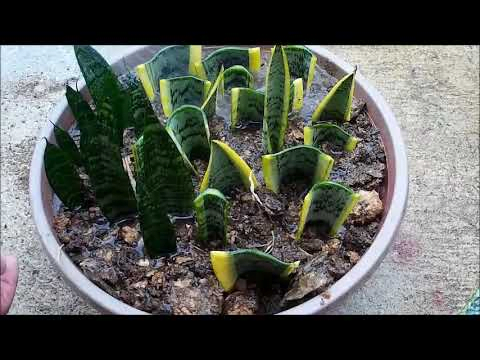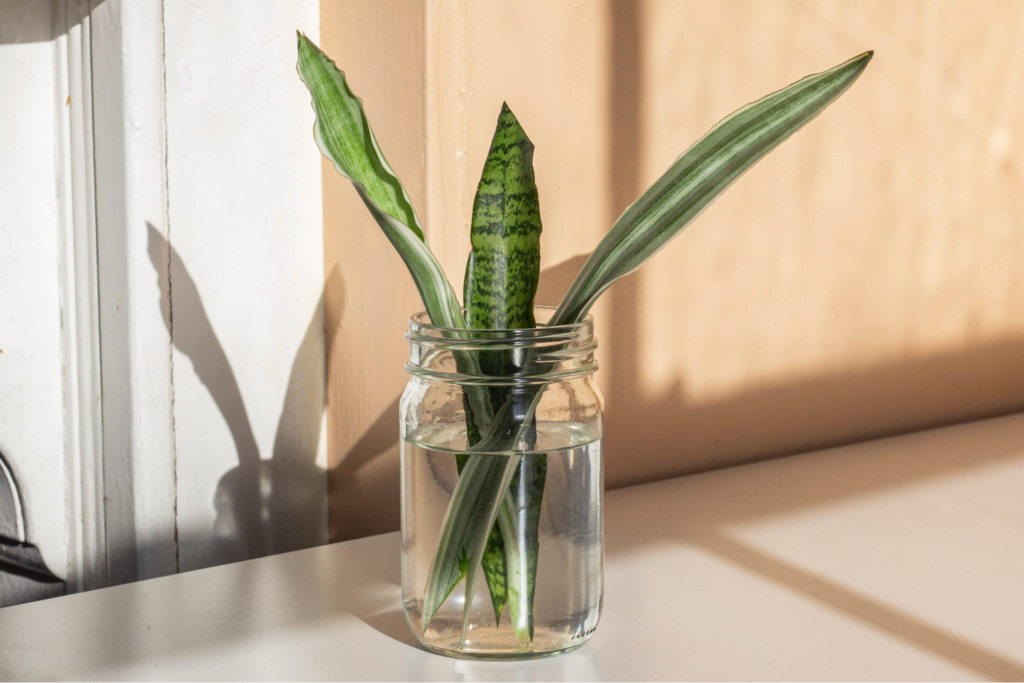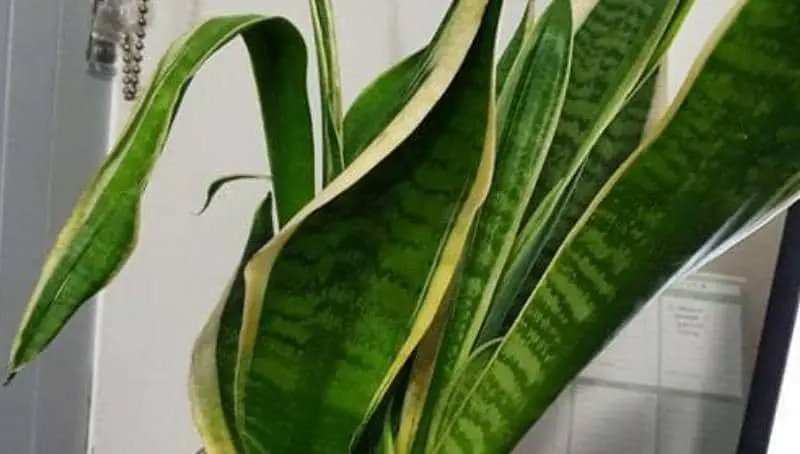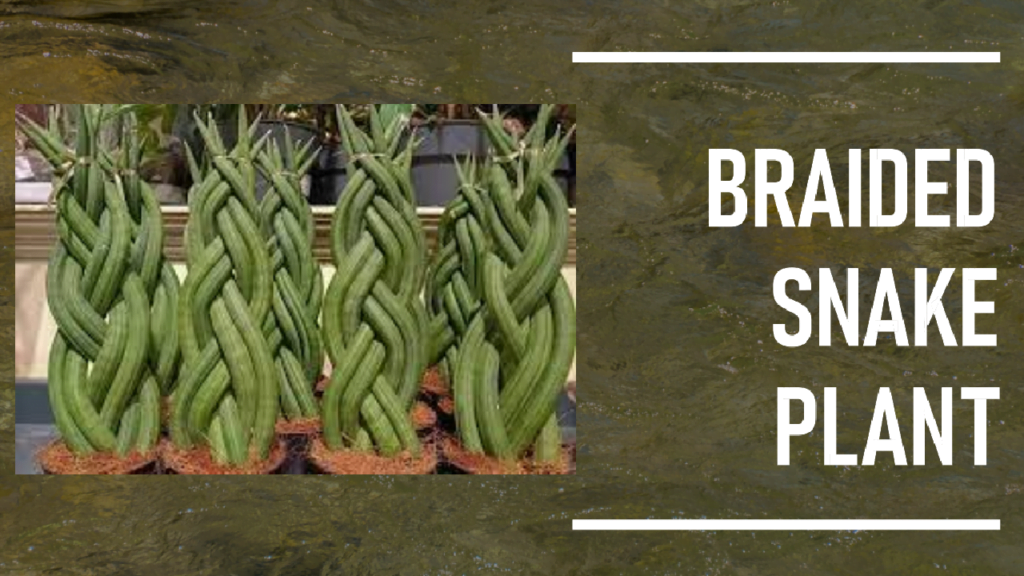Variegated snake plant (Dracaena Trifasciata), known for being a hardy houseplant. The variegation occurs through various colors but the OG one is, different shades of green-blended leaves with yellow borders. Their leaves are sword-like hardy, matching its hard tolerance power in any circumstances.
Though many swear that variegated snake plants’ care is among the easiest of all indoor plants, over the years we have cared for many of them in the nursery, and we learned that they have their specific routine of likes and dislikes. This article is about those caring tips that are ideal for variegated snake plants’ cultivation.
Overview of Variegated Snake Plants
What are variegated snake plants?
Variegated snake plants are one of the common houseplants, native to Africa and Asia. Even though there are countless varieties available, they possess similar features such as Sword-like hardy leaves that pointed upwards, and of course variegation. Those sharp and pointed leaves rise from a thick rhizome. Pale green flowers and orange fruits can be seen in spring, but that occurs in outdoor plants only. Variegated snake plants are popular for pot culture because of their slow growth and longevity.
Popular variegated snake plant varieties
1. Sansevieria trifasciata ‘Mother-in-law’s Tongue’
Most cultivated species among all variegated snake plants. It has a light-green base, dark-green patterns, and a yellow border. All leaves grow upright and indoors mature height can reach up to three feet.
2. Sansevieria trifasciata ‘Twist’
Leaves are all pointed upwards but instead of straight, they are twisted. Their variegation is similar to the mother-in-law’s tongue.
3. Sansevieria ‘Golden hahnii’
A relatively tiny species. They have green variegation with light yellow borders.
4. Sansevieria ‘Laurentii’
They have a green base along with green zig-zag patterns and yellow borders. They can grow about twenty-four to thirty inches long.
Characteristics of variegated snake plants
Flower: Flowers in Variegated snake plants are a rare sight, but it’s a good sign, cause growing flowers sometimes happen in those plants due to stress and it’s a sign for you to check what’s bothering them. However, they produce their light green to white flowers in a clustered form on the top of a stake. Variegated snake plants’ flower smells wonderful.
Air purifier: While serving their looks they clean formaldehyde and benzene from air as well. They also convert co2 into oxygen at night.
Toxicity: Variegated snake plants don’t get attacked by pests because they contain saponins, but at the same time this is mildly toxic to pets. The toxin is responsible for numbness, oral swelling, and diarrhea. The effects are really minimal to humans.
Ideal Growing Environment of Variegated snake plants
Light requirements for variegated snake plants
Variegated snake plants’ light tolerance level is wide. They can handle direct sunlight, but too much of it will end up burning their leaves while making them limp. They can handle shade, but constantly living in shady areas will end up messing up their colors and photosynthesis process.
At least five hours of direct sunlight or eight hours of indirect sunlight is ideal for their healthy growth. Choosing an east or south-facing window for your indoor variegated snake plant will fulfill the need.
Temperature and humidity
The common room temperature is all they need to stay healthy, the ideal being fifty-five to seventy degrees Fahrenheit. They can tolerate warm weather, in fact, they love warmer weather more than colder. These plants don’t like chilly weather and cold breezes can harm them. Sure they can tolerate but they don’t prefer high humidity.
Regular household humidity levels are enough for them but don’t keep them air conditioning unit or vent, it will suck the moisture out of their leaves and leave them dry.
The right pot and soil
As variegated snake plants are prone to root rot, choosing the right soil is essential to keep those hardy plants alive. The right soil would be the one that has a good drainage system and good airflow in the soil to prevent overwatering and promote root growth.
They are succulents and store moisture in their leaves, so they don’t require other mediums that retain moisture.
Use free-draining soil with porous and mix it with some organic material to provide nutrients.
Their ideal soil ph level is 5.5-7, they aren’t that demanding about soil ph levels but if you wanna provide it you can invest in a soil moisture meter that can read ph levels as well. [amazon product link].
Proper drainage
No matter what the pot you are using for your variegated snake plant should have a draining hole. Choosing a terracotta pot over a plastic pot is superior as they dry out the water more easily. Terracotta pots are heavy and will be helpful to handle the weight of your tall plant. Prefer a pot that is porous so it can work well in air and water exchange.
Watering Management
Variegated snake plants are drought tolerant and require little water, but they still need a routine.
Watering frequency
Like other succulents, variegated snake plants collect water in their leaves and roots. If you forget to water them for long, they will use the fluids they stored and live. They require to be watered once a month or twice a month depending on the season. In winter they need less water.
Best techniques for watering variegated snake plants
The best practice would be thoroughly moist the soil during watering sessions.
Use a soil moisture meter [amazon product link] or your finger to determine if the upper soil surface is dry, if it appeared to be wet to touch wait for another week to provide water.
Use filtered or rain water instead of tap water. Tap water contains minerals that can stack up in the soil and get in the way of airflow.
Don’t wet the leaves, it’s not needed.
Common watering mistakes and how to avoid them
Overwatering is common in these hardy plants’ failure. They can live in underwater conditions for over a month with no sign of droopiness, whereas waterlogged soil will kill them in a few days. If leaves are falling over, it’s a sign that you are overwatering them.
Refrain from watering and put them in an airy place, give them time to recover. If the situation is worst, gently take them out, wipe the mud, and repot them.
Nutritional Needs and Fertilization
As indoor variegated snake plants don’t grow much so they don’t need too much fertilizers either.
Nutritional requirements
Fertilizers for snake plants are more like supplements, they are not meals. It can cover up the shortage of nutrients, but it can’t give the growth that proper sunlight, water, and soil can give. However, occasional fertilizer still plays a role in your snake plant’s life.
Choosing the right fertilizer
A good houseplant fertilizer will do the job, but here are some key factors that can be considered when choosing:
NPK (nitrogen, phosphorus, potassium) levels of 10-10-10 will work well for Variegated snake plants.
Choosing between synthetic or organic is highly dependent on the needs. Organic fertilizers like compost are better and eco-friendly for regular feeding and synthetic fertilizer is better for quick nutrient deficiency solutions. If the leaves turn yellow rather slowly it might be caused by lack of nutrients.
Slow-release fertilizers are better, they act like compost and are safer.
Fertilization frequency for variegated snake plants
Just like water, less fertilizer will slow down the growth while over-fertilizer will kill them. Only fertilize during early spring, meaning their growing season. If your plant is facing sunburn, pest damage, or temperature shock, don’t provide fertilizer, cause it will over-stress them.
Fertilizer burn
When you provide more fertilizer than your plant can handle, they started to build up in the soil and mess up the root’s growth. This condition is known as fertilizer burn. To treat them you need to perform soil flush. Drain the soil with water till it’s coming out from the bottom of the hole. The water should carry the fertilizer out on its way.
Propagation Techniques
There are four DIY methods you can try to propagate your variegated snake plant:
Propagating variegated snake plants through division

The division method is one of the faster than others. You will need a mature mother plant for it. Gently take the plant out of the pot. With a sharp cutting object cur sections. Make sure each section has rhizomes and a leaf. Plant them in the new soil mix.
Soil propagation

Cut a mature size leaf above the soil line. Snip the leaf into a few pieces. Leave those cuts for a couple of days to get callus, then plant them in the soil. One downside of this method is that the new plant might not get variegation.
Water propagation

Easiest method out of all. Cut a mature size leaf from the mother plant. Put them in water in a way that 25% of the plant should be in water. Refill with fresh water every week. This process takes time and the new plant doesn’t get the variegation.
Pruning and other maintenance
Trimming and shaping variegated snake plants
The best time to prune or shape your variegated snake plants is during spring. But damaged or old leaves can be removed from the tree at any time of the year. When you are ruining you need to target for the base, not the tip. Cutting your leaves from the top will invite diseases along with an odd-looking leaf. If any leaves appear to be out of shape, remove them from the base to shape them according to your desire.
Removing dead or damaged leaves
Removing dead damaged leaves is a way to treat plants that are affected by some kind of disease or pests. Use your hand to remove the leaf or cut it as closely as possible at the base level. But, if all your leaves are affected do not prune.
Controlling pests and diseases
Three common pests and diseases that affect variegated snake plants:
Root rot: Caused by overwatering. First roots get brown and mushy then leaves started to get yellow and wilting. If you notice the disease when the roots are only affected, it can be cured just by taking a break from watering. But if the diseases have already got to the leaves you need to repot them.
Mealybugs: If your leaves are deformed and there are white spots in the leaves it might be caused by mealybugs. Mealybugs inject into the leaves and suck the fluid, making them weak. Use neem oil to get rid of them or rub alcohol on the spots.
Spider mites: If you notice tiny waves and even tiny dot-like white creatures roaming around your leaves, they are spider mites. They suck the sap off the leaf, causing them to get deformed. You can use the same treatment as mealybugs for spider mites as well.
Repotting Guide
When to repot your variegated snake plant?
Early spring or winter is the best time for repotting your variegated snake plant so that it will have enough time to settle in its new home before summer. But If there’s a root bound and the plant is suffocating in that tight space repotting is necessary no matter what season it is. If the roots come out from the bottom hole, container cracking, or water straightly draining out in no time is the sign that it’s repotting time.
Step-by-step guide for repotting
Take a container that is slightly bigger than the recent one (you don’t wanna shock them with a huge pot) and put potting mix in it.
Now the plant out gently and tease the root ball without harming the roots place it in the soil and cover the whole root ball with soil as well.
Don’t put water or too much fertilizer just after repotting, it will be too much to handle, let them get habituated in the new home.
Common Issues
Drooping or bending leaves

Variegated snake plants are known to be staying upright, but suddenly they are bending over the edge of the pot. The most common reason is overwatering. Overwatering leads to root rot and when the roots not working leaves are not getting the water supply and the lack of fluid in the leaves will provoke them to bend over.
To prevent that you need to remake your water schedule routine. Invest in a soil moisture meter[Amazon product link] to make sure the soil is really dry before putting water again.
Narrow and stretched leaves

Lack of sunlight is the reason behind this. Plants need to perform photosynthesis and for that they need sunlight. To get the sun they started to stretch out toward the light and form into scattered, stretched, and narrow-looking plants. Your plant is craving for sun and you need to provide it to fix it.
Deformed leaves

You need to inspect your leaves closely if several leaves in the same plant are deformed, causing deformed leaves to be mostly caused by pests. They suck the juice out of the leaf and act as an obstacle to their healthy growth. Use neem oil or rubbing alcohol to get rid of them.
Tips to Increase Variegated Snake Plant Growth
Regular cleaning
Variegated snake plants are all leaves and they are big and attract dust and leaving the dust on them for long will act as a layer for sun absorption. So, cleaning them from time to time is a healthy habit. Cleaning them will also help them to not get attacked by pests as well.
To clean them take a piece of cloth and soak them in water, rinse the access water, and wipe down the leaves. You can add a few drops of neem oil to the water as well.
Rotating the plant
If your variegated snake plant is positioned near a window and has an uneven growth or leaning, it is a sign to rotate it. By regularly rotating the plant every few days, you confirm that all sides receive an equal amount of light.
Using growth supplements
Supplement your plant’s water monthly with half-strength liquid fertilizer. Give a 3:1:2 ratio of nitrogen, phosphorus, and potassium, or you can go for a more balanced option 10:10:10 or 20:20:20 formula, but you need to properly dilute it.
Conclusion
We have talked about factors in variegated snake plants, maintenance, and common issues they face, as well as solutions. Variegated snake plant care is minimal and every beginner should opt for it. And if they face any issue you can just get the solution from here and treat them.
FAQs
Q1. How often should I water my variegated snake plant?
Your variegated snake plant only needs to be watered every fourteenth day or two weeks. For these plants, you can allow the soil to get completely dry out before providing water again because they can tolerate drought but not root rot.
Q2. Can I keep variegated snake plants in low-light conditions?
Not only Variegated snake plants can survive in low light, but they can also thrive in low light. They extremely handle themselves in any light conditions. That’s why don’t get surprised if you see one of them inside a hotel room’s cupboard.
Q3. How do I propagate variegated snake plants in water?
The variegated snake plant’s water propagation method is one of the easiest and most hassle-free of all. You need a jar or vase (clear is better) and fill it up with clear water for a few inches, now cut your preferred matured size leaf from an established plant, and place it in the jar. You have to alter the water after every few days.
Q4. What are the most common pests that affect variegated snake plants?
As a part of succulent species variegated snake plants also get attacked by common succulent intruders like mealybugs, spider mites, and scales.
Q5. Can variegated snake plants survive outdoors during winter?
Harsh winter is one of the factors that can defeat these hardy variegated snake plants. The plant will simply die if you leave them outside for long when the temperature is below fifty-five degrees Fahrenheit.







